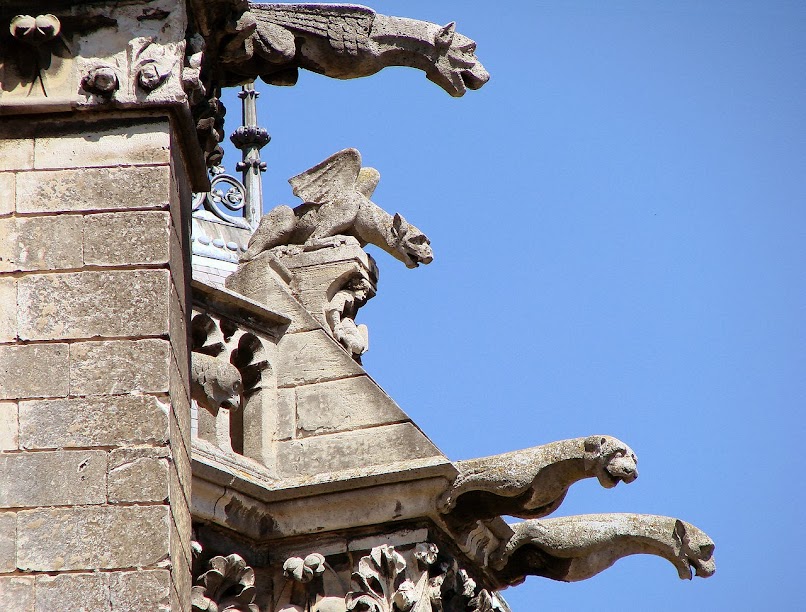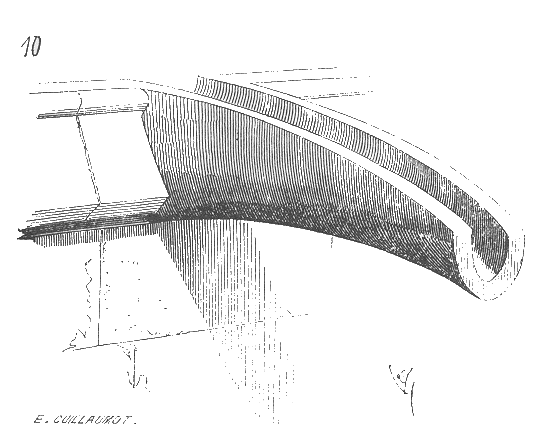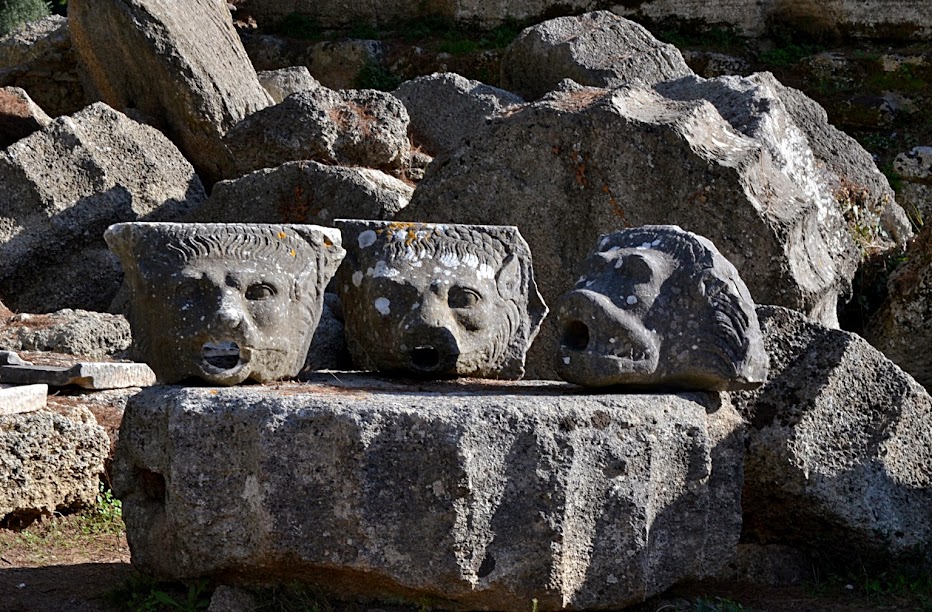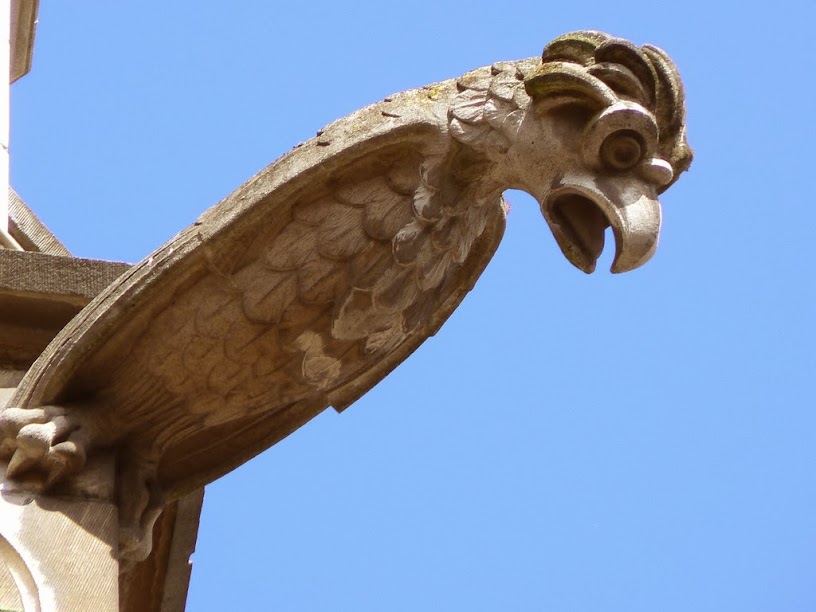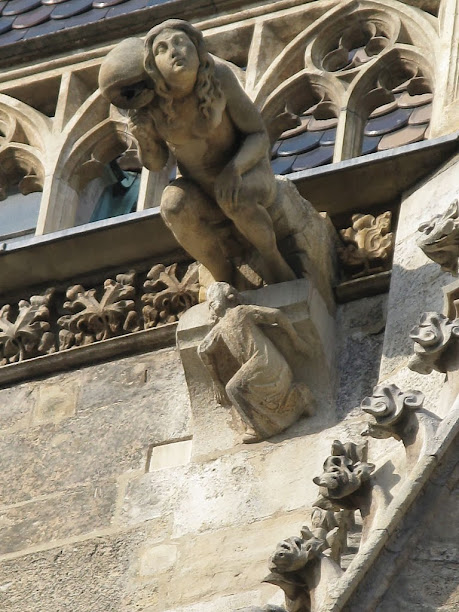Some of the most creative sculpture in ancient and medieval architecture is to be found in the buildings’ gutters. More specifically, in the gargoyles:
Gargoyles from Amiens Cathedral (built 1220 – 1269), Amiens
A gargoyle is a gutter that carries rain water away from a building in order to avoid damage to the stone and mortar of the walls. The word “gargoyle” itself is related to words that refer to the sound of bubbling water, as in “gurgle” and “gargle.”
In its simplest form, a gargoyle looks like this:
Engraving from Eugène Viollet-le-Duc, Dictionary of French Architecture from the 11th–16th Century (1856)
However, plain half-pipes are not exactly inspirational, so carvers produced more elaborate hollow statues that function as pipes to carry rain water away.
In Ancient Egypt and Ancient Greece, gargoyles were often sculpted as lions:
Lion gargoyle from the Hathor Temple at Dendera (built 4th century BC), Egypt
Fallen lion head gargoyles from the Temple of Zeus at Olympia (built 472 – 456 BC), Greece — Photo by Stelios Zacharias on Flickr
In the Middle Ages a much greater variety of animals and imaginary creatures appeared in European religious architecture:
Sheep gargoyles, Strasbourg Cathedral (built 1176 – 1439), Strasbourg — Photo by Rama on wikicommons.org
Eagle gargoyle, Saint Rumbolds Cathedral (built 1200s – 1520), Mechelen, Belgium
Dragon Gargoyle, Saint Vitus Cathedral (built 1344 – 1929), Prague — Photo by Richard Seaman
Human gargoyles can also be found:
Gargoyle, Cologne Cathedral (built 1248 – 1880) — Photo by Georg Sander on Flickr
Gargoyle, Saint Vitus Cathedral (built 1344 – 1929), Prague
Gargoyle, Saint Stephen’s Cathedral (built 1137 – 1160), Vienna — Photo by Yair Haklai
The precise meaning of many of these sculptures has been lost in time and can therefore only be guessed at.
Because many medieval gargoyles look scary, it is often thought that they represent evil so that people remember it is always out there, or that gargoyles scare evil away from religious buildings.
When human in form, some of the gargoyles seem to represent sins and what happens to people who commit them. In other words, they were warnings for those who could not read, which means a majority of people in the Middle Ages.
Some gargoyles, however, look quite harmless and may be related to local legends and stories. Yet others may simply be the result of the carvers’ whims, based on the fears and imagination of medieval minds.
The best way of seeing gargoyles is taking the stairs to the top of cathedrals, such as Notre Dame de Paris, because from the top of the towers the small statues can be seen up close. A good zoom lens on a camera also helps:
Gargoyles, Notre Dame de Paris Cathedral (built 1163 – 1345), Paris — Photo by Krzysztof Mizera
New building techniques replaced gargoyles starting in the 17th-18th century period, but many can still be seen in the cities of Europe or on more recent cathedrals built in medieval styles elsewhere, especially Gothic.
Gargoyles may be rain gutters, but their great variety and quality makes them as fascinating as many museum sculptures, with the added bonus of endless symbols and meanings. All it takes is observation, and a little imagination.
